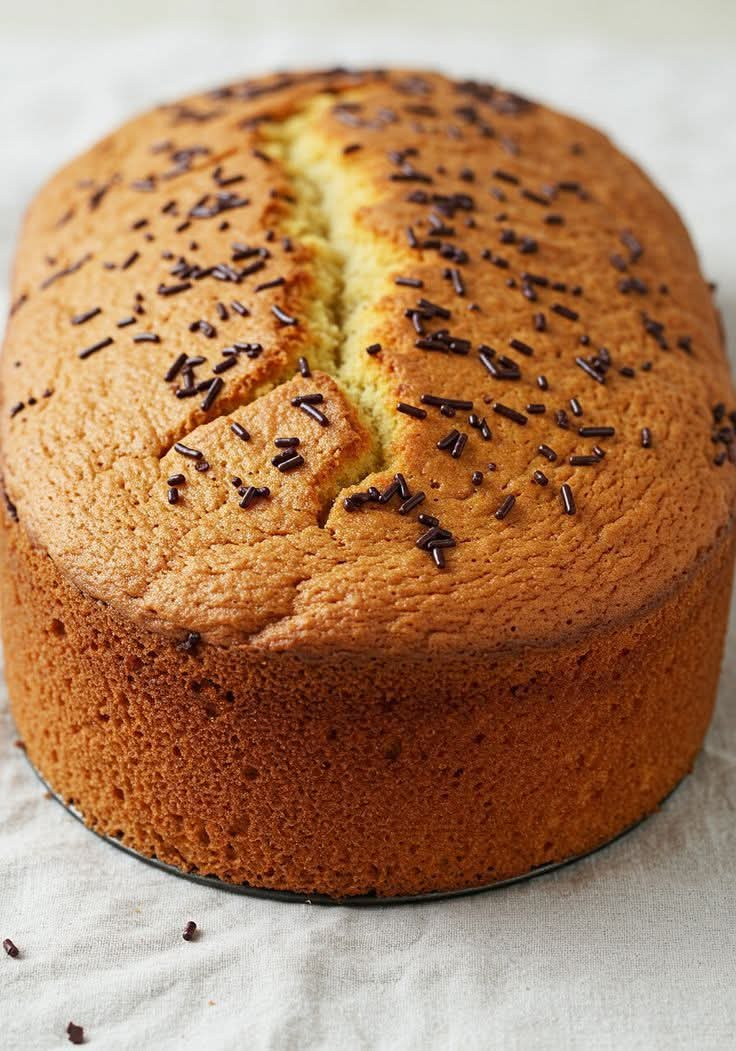Sure! Here’s a full, expanded version of your Milk Sponge Cake recipe—complete with an introduction, ingredients, history, preparation method, and more, written in a warm, inviting tone for cake lovers:
Milk Sponge Cake: A Timeless, Fluffy Delight
Introduction
There’s something magical about a classic sponge cake—light, fluffy, and perfectly sweet. The Milk Sponge Cake is one of those comforting recipes that brings back childhood memories, teatime joy, and the warm scent of baking wafting through the house. This recipe is especially dear to those who appreciate simple yet satisfying desserts. Its texture is soft and airy, and its subtle vanilla aroma makes it a favorite for any occasion.
Whether you’re a home baker or a seasoned pastry lover, this cake is one you’ll return to again and again. The secret lies in whipping the eggs and sugar thoroughly—don’t skip the 10-minute beat, it’s what gives this cake its signature sponge-like height and tenderness.
A Brief History of Sponge Cake
Sponge cakes date back to the Renaissance period, believed to have originated in Spain or Italy. Unlike butter cakes, sponge cakes rely solely on beaten eggs to provide leavening. Milk sponge cake, a variant, became popular when milk was added to enrich the flavor and provide a velvety texture. Today, it’s enjoyed all over the world—sometimes plain, sometimes layered with fruit, cream, or frosting.
Ingredients
- 4 large eggs (room temperature)
- 2 cups (400 grams or 14.1 oz) granulated sugar
- 1 teaspoon vanilla extract
- 2 ¼ cups (270 grams or 9.5 oz) all-purpose flour
- 2 ¼ teaspoons baking powder
- 1 cup (240 ml) warm milk
- ¼ cup (56 grams) unsalted butter (optional, for added richness)
- A pinch of salt
Instructions
Step 1: Preheat the Oven
Preheat your oven to 350°F (175°C). Grease and line a 9×13-inch pan or two 8-inch round cake pans with parchment paper.
Step 2: Beat the Eggs and Sugar
In a large mixing bowl, beat the eggs and sugar together using a stand mixer or hand mixer on high speed for about 10 minutes, until the mixture is thick, pale, and forms ribbons when the beaters are lifted.
Step 3: Add Vanilla
Mix in the vanilla extract and salt, just until combined.
Step 4: Sift and Fold
In a separate bowl, sift together the flour and baking powder. Gradually fold this into the egg mixture using a spatula, a little at a time, being careful not to deflate the batter.
Step 5: Warm the Milk
In a small saucepan or microwave-safe bowl, warm the milk until just steaming. If using butter, melt it with the milk. Gently stir the warm milk mixture into the batter until just combined. This helps the cake stay moist and light.
Step 6: Bake
Pour the batter into the prepared pan(s). Bake for 30–35 minutes, or until a toothpick inserted into the center comes out clean.
Step 7: Cool
Let the cake cool in the pan for 10 minutes before turning out onto a wire rack to cool completely.
Serving Suggestions
- Dust with powdered sugar for a simple finish.
- Slice and layer with whipped cream and fresh berries.
- Serve with a cup of tea, coffee, or warm milk.
Formation & Texture
The formation of this cake relies heavily on air incorporated into the egg-sugar mixture. The structure is formed by the gluten in the flour and stabilized by the heat of the baking process. Milk softens the crumb and adds a delicate richness, making every bite melt in your mouth.
For the Lovers of Cake
To all cake lovers: this one’s for you. It’s a humble masterpiece—no fancy frostings or complicated steps. Just pure joy, bite after bite. It’s a great base for creativity—add citrus zest, spices, or even a cocoa swirl. But even on its own, it’s the kind of cake you make once and remember forever.
Conclusion
This Milk Sponge Cake is proof that simplicity can be spectacular. With a tender crumb and sweet flavor, it’s a celebration of everything good about homemade baking. Share it with those you love, or savor it quietly with a warm drink and a book. Either way, it’s bound to become one of your favorites, too.
Would you like a printable version or a photo to go with the recipe?
